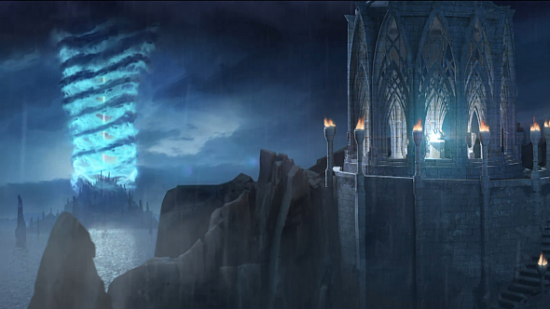As I mouse over my intervention army, full of Star Dragons, Dragon Princes, and Phoenix Guard, my thoughts run something like: I wish I could buy all that for just 10,000 gold. But intervention armies aren’t your own – they are allied to you and controlled by the AI – so I can only look on, with something akin to parental pride, as this monstrous force I’ve created raze the Fortress of Dawn.
Any unanswered questions? Here’s everything we know about Total War: Warhammer 2.
Job done, I think: provided the Skaven Clan Mors don’t retake that city, their ritual will fail, and I will have set back a key rival in the race for Total War: Warhammer II’s new Vortex victory condition.
But what will happen to my intervention now, I wonder? Their mission accomplished, will they disband? Will they chase down the other two ritual cities? Is there – please let there be – any way to confederate them into my own forces?
Curious, I find myself almost looking forward to Total War’s protracted end-turn phase, and watch as the army sails to the Southlands, where the elven minnows Tor Elasor are overreaching themselves with an expedition to Clan Mors’ homeland. My intervention then goes on a hilarious rampage across the southern jungles, stomping on under-city after under-city, only for Tor Elasor to sweep in in their wake and take three free settlements in a row. When my intervention is finally defeated, the elves have almost doubled their assets.
I had noticed previously that High Elves tend to be shameless opportunists in this way; both Saphery and Nagarythe violated my territory to steal settlements from under my nose, the latter of which had been a flourishing town of my own three turns earlier. That it had become a pile of rubble was not due to an intervention by a rival power, but a Chaos army spawned by one of my own rituals. And when Nagarythe – the bastards – went and nicked it, they also broke my control of the the province. Needless to say an instant declaration of war followed, reliability rating be damned.
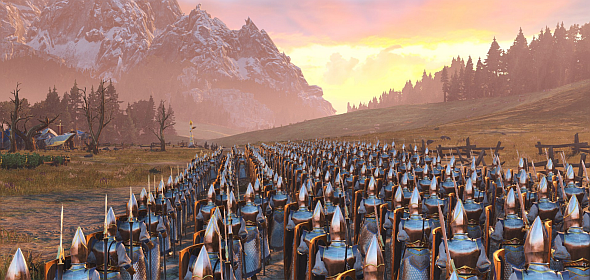
These are the kinds of emergent story that the best sandbox games, including Total War, have always produced, and which Creative Assembly were determined to preserve even as they made the most story-driven entry in the series to date. “It’s how to introduce narrative without it getting in the way, or putting the players on rails,” Andy Hall, CA’s lead writer, says.
Directed narrative is antithetical to emergent narrative practically by definition. You can have both as distinct ingredients, but – in videogames, and for now – they don’t mix. Salad bowl not melting pot, to extend the culinary metaphor.
So you would be forgiven a little anxiety in response to Total War’s uptake of directed narrative. But, as it turns out, not only does the Vortex in no way undermine the game’s emergent stories, it enhances them. Interventions often do noteworthy things: on another occasion, three simultaneous full stacks ran rampant across Naggaroth, not only scuppering Malekith’s lead in the Vortex race, but gutting his entire empire.
I say in our review that I have a problem with the ritual-spawned Chaos stacks, which seem, rather unfairly, to always appear where you are most vulnerable. But I will admit that without them Nagarythe wouldn’t have had the opportunity to be such treacherous dicks (and ‘treacherous’ is the word, even if they didn’t technically backstab me as the game’s systems define it). In turn, I wouldn’t have had the opportunity to reap my sweet revenge.
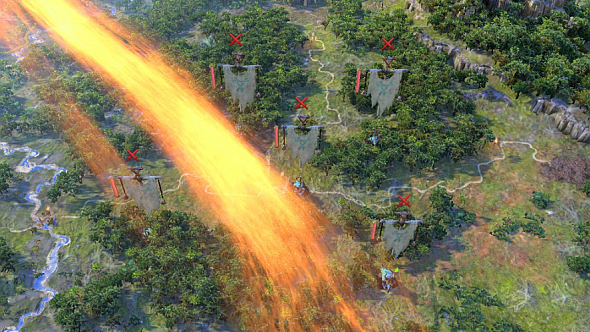
CA have said the Vortex victory condition also serves as an answer to the perennial strategy problem – which has applied in particular to Total War – of the end-game cruise: the sense that once you pull concretely ahead of the pack, winning is a mere formality spoiled by tedious busywork.
It is still possible to lead in both the Vortex race and by every other metric, but what has changed is that you are never so far ahead in both that you can afford to completely relax. Over the 120 or more turns it may take you to claim the Vortex win, it is pretty tricky to knock out all three of your rivals at the same time as staying in the running yourself. Someone is always nipping at your heels.
The AI is reasonably adept at defending its ritual sites (depending on the vulnerability of those designated as such, which does add an element of randomness). Malekith seems best at this – with the exception of the bruising gangbang I mention above, which was largely down to coincidental timing – as he has swept aside full-strength interventions with ease in both my High Elf and Lizardmen playthroughs. In the former, he started his final ritual just three turns after I did mine, which shows you cannot afford to delay.
Not to underestimate the game’s story – which is an important education for anyone who dismisses Warhammer as mere Tolkien imitation – but it very much serves the game, rather than the other way around. It is valuable world-building and shows your chosen race on a more personal level, but ultimately, it’s just context for the five rituals you will need to enact to win the game. Given these limitations, it is pretty impressive that CA manage a neat plot twist towards its climax.
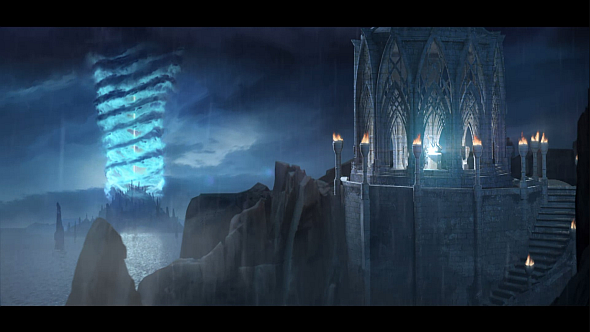
Last year’s Total War: Warhammer punctuated the series’ otherwise predictable rhythm with escalating Chaos invasions, culminating in the arrival of Archaon. Warhammer II’s Vortex does this even more successfully, adding a secondary layer of progression that interacts with the traditional Total War loop in new ways. There is potential to take it all much further, as Warhammer lore nerds will know. We asked Hall whether that is a possibility for the trilogy’s final entry.
“I hope so. I think we’ll see how players receive it, what our reviewers say,” he says. “I hope that what I hear is that people really enjoy it and actually want more, and if that’s definitely what the reception is, I think we’ll go all in.”
This should excite historical Total War fans, too – there is no reason that history’s often stranger-than-fiction stories shouldn’t be equally fertile ground for these ideas. Indeed, that is the context in which they were first tentatively trialled: Attila’s arrival in his game is comparable to Archaon’s in Warhammer I. As such, it will be really interesting to see how the first Total War Saga game turns out – we hear these historical spin-offs will explore ‘powder-keg’ moments in history, rather than spanning whole eras. Of the many possibilities this tighter focus should enable, a stirring narrative focused on historical figures who won’t die of old age is surely one.
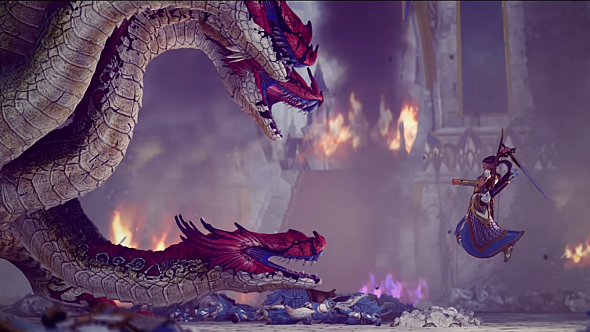
In the meantime, it is nice to see Creative Assembly experimenting, while preserving what has always been valuable in their flagship series’ sandbox gameplay. If a little fantasy is what they needed to feel able to do this then hopefully the entire fan base can get behind it, too.
